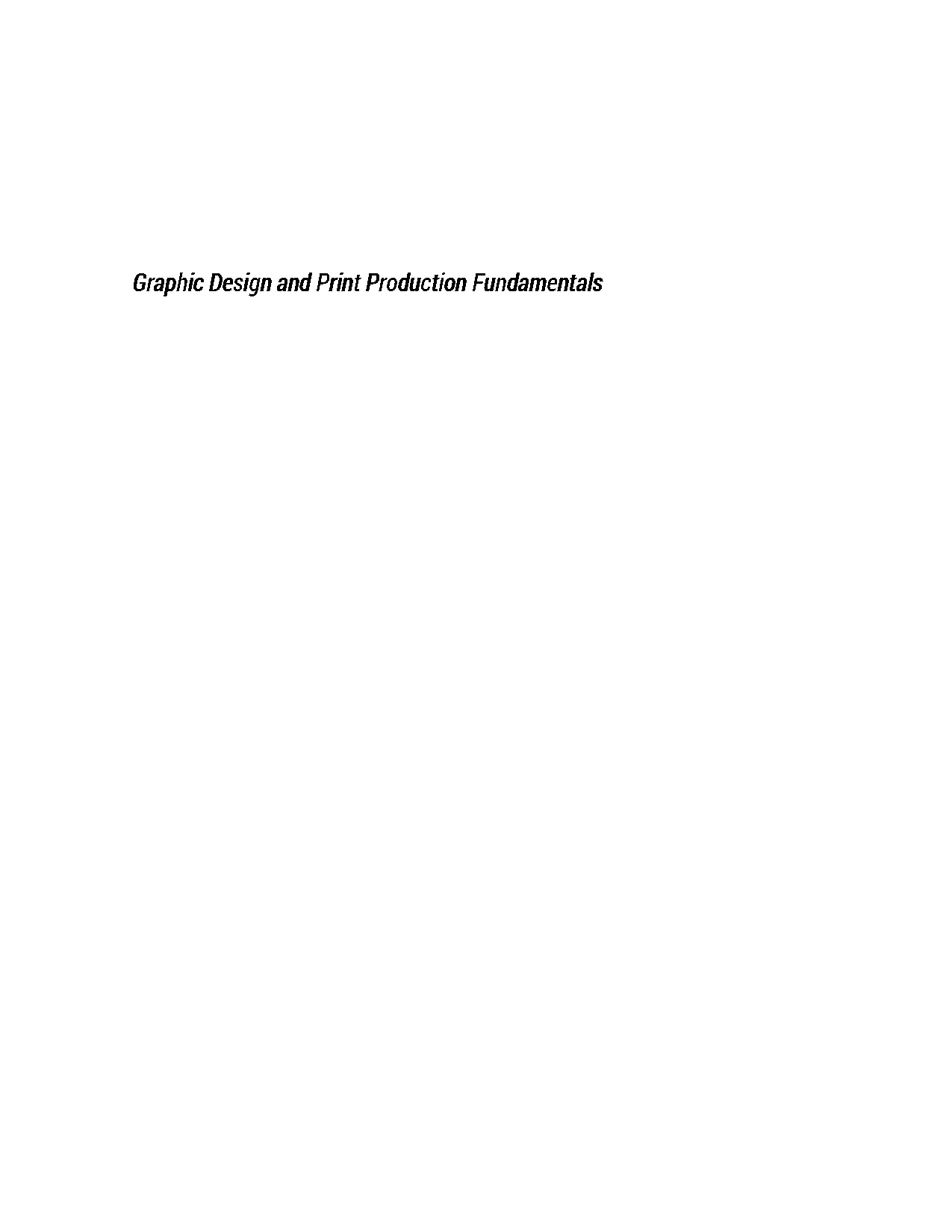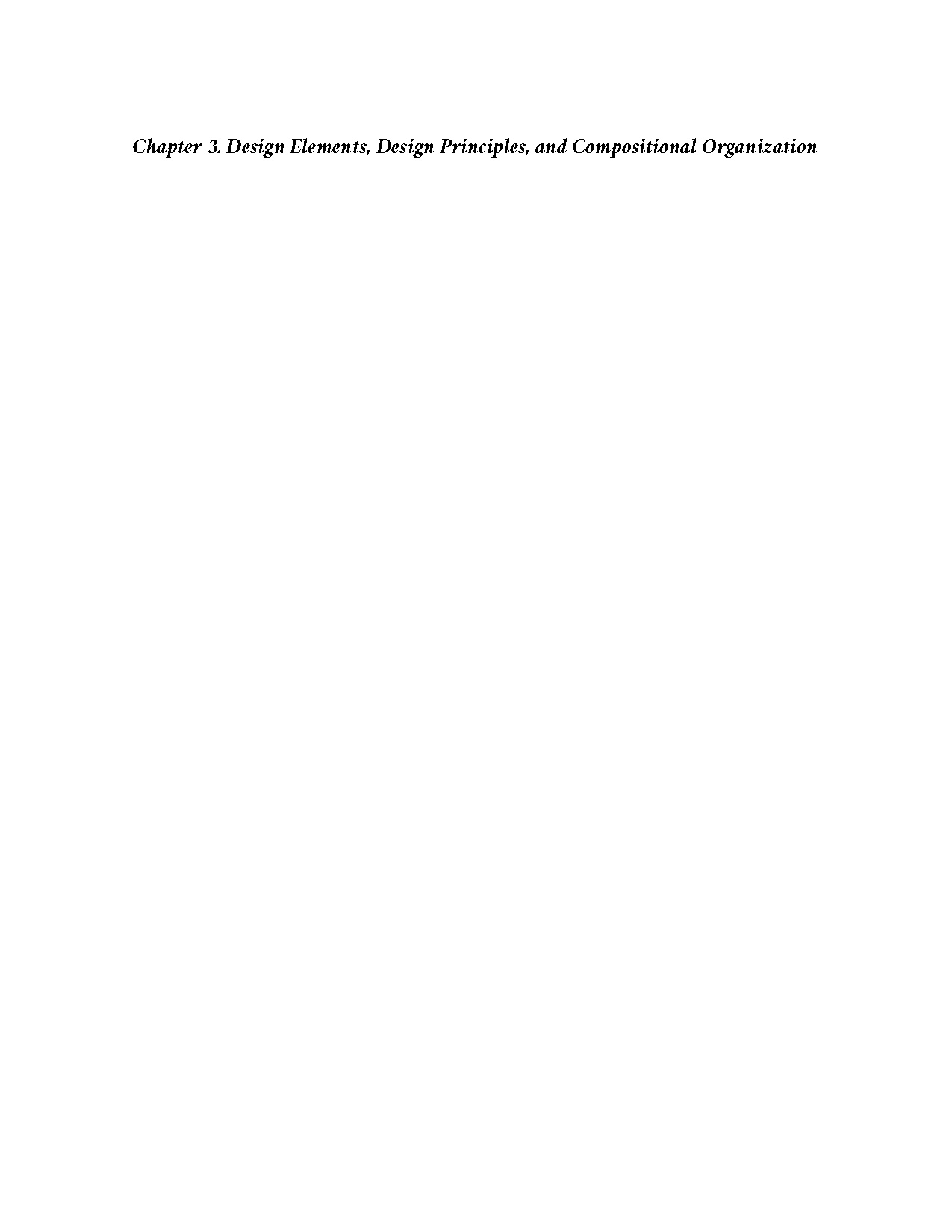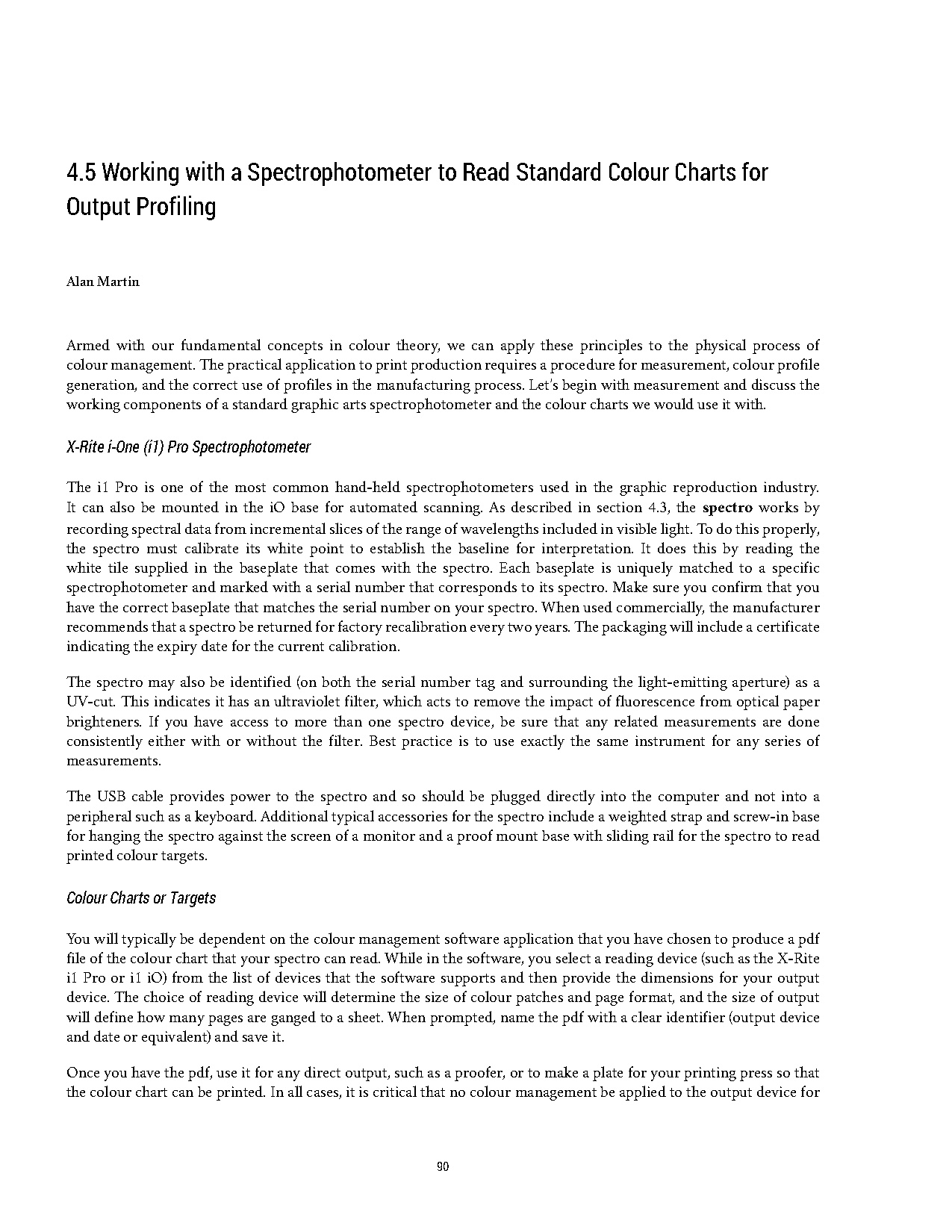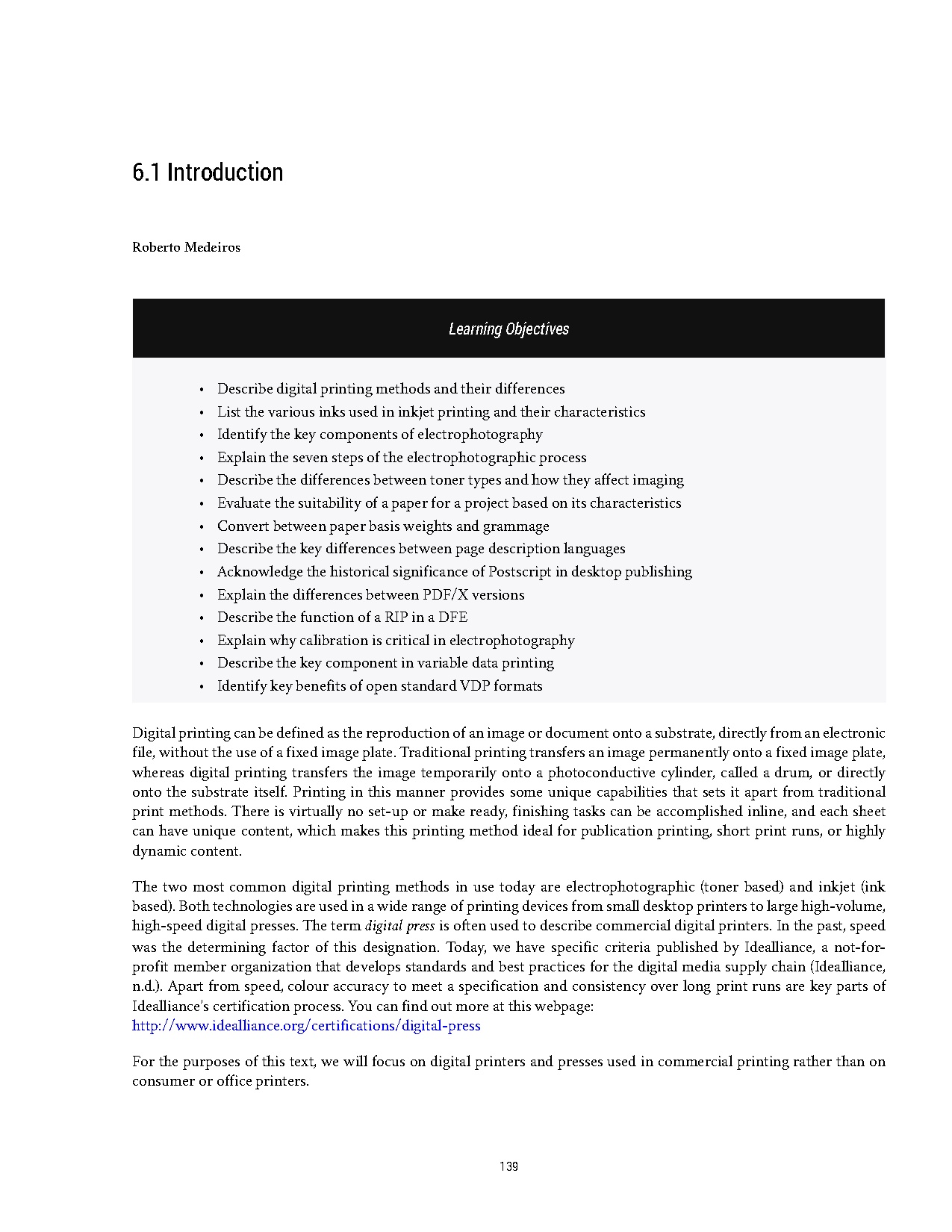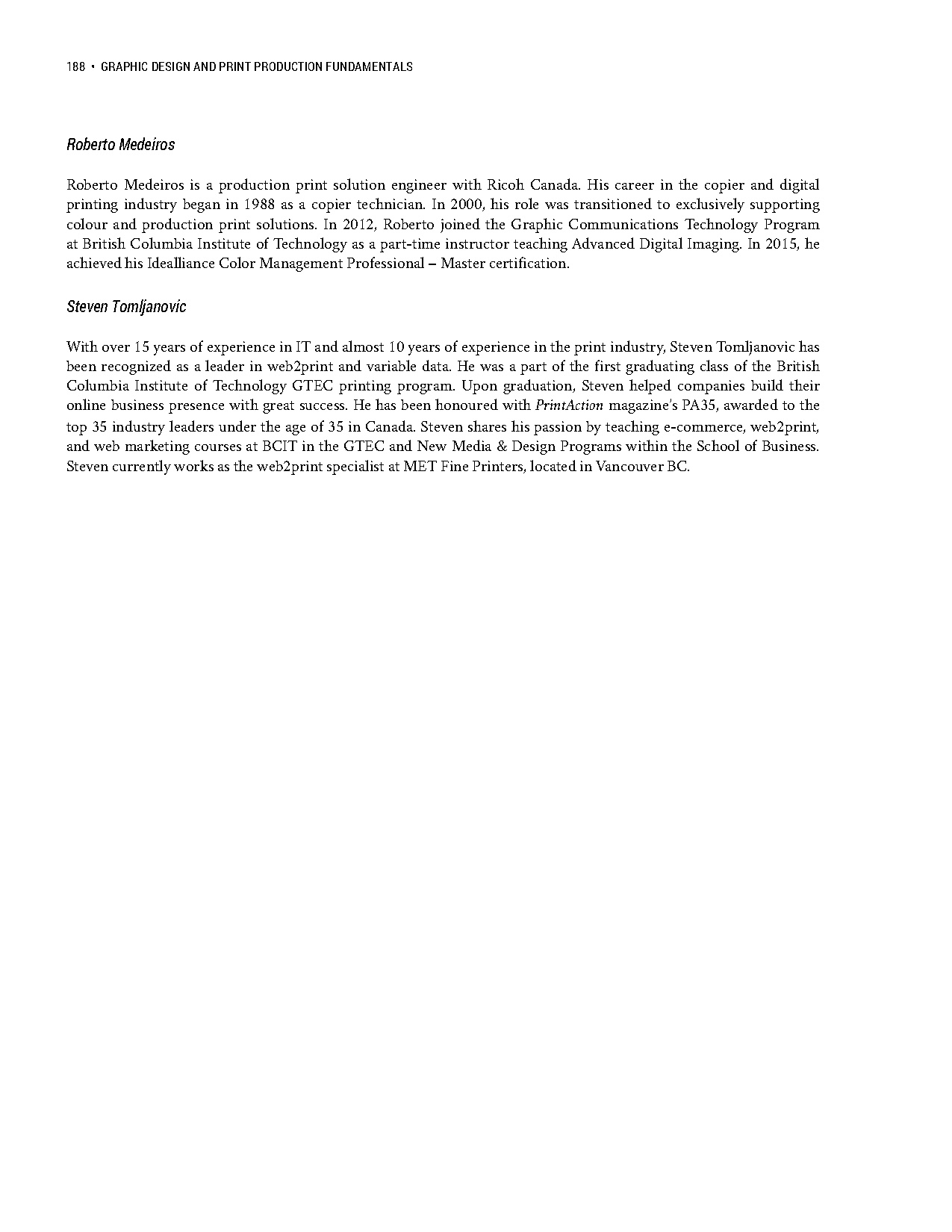Graphic Design and Print Production Fundamentals
Graphic Design and Print Production
Fundamentals
Graphic Communications Open Textbook Collective
Wayne Collins, Alex Hass, Ken Jeffery, Alan Martin, Roberto Medeiros, Steve Tomljanovic
Unless otherwise noted within this book, this book is released under a Creative Commons Attribution 4.0 International License also
known as a CC-BY license. This means you are free to copy, redistribute, modify or adapt this book. Under this license, anyone who
redistributes or modifies this textbook, in whole or in part, can do so for free providing they properly attribute the book.
Additionally, if you redistribute this textbook, in whole or in part, in either a print or digital format, then you must retain on every
physical and/or electronic page the following attribution:
Download this book for free at http://open.bccampus.ca
For questions regarding this license, please contact
[email protected]. To learn more about the B.C. Open Textbook project,
visit http://open.bccampus.ca .
Cover image: Cover is a montage of two images: (https://unsplash.com/photos/WNevBlZWCKA) by Simon Hattinga Verschure and
(https://unsplash.com/photos/BVyNlchWqzs) by Amador Loureiro, both licensed under CC0.
Graphic Design and Print Production Fundamentals by Ken Jeffery is licensed under a Creative Commons Attribution 4.0
International License, except where otherwise noted.
Contents
About the Book
Introduction
Ken Jeffery
viii
1
Chapter 1. Design History
1.1 Introduction
Alex Hass
6
1.2 William Morris and the Arts &amp Crafts Movement
Alex Hass
9
1.3 Deutscher Werkbund
Alex Hass
11
1.4 Bauhaus
Alex Hass
12
1.5 Dada
Alex Hass
13
1.6 International Typographic Style
Alex Hass
14
1.7 Late Modern | New York Style
Alex Hass
16
1.8 Post Modern
Alex Hass
17
1.9 Summary
Alex Hass
19
Chapter 2. Design Process
2.1 Introduction
Alex Hass
22
2.2 Design Research and Concept Generation
Alex Hass
25
2.3 Define
Alex Hass
26
iv
2.4 Research
Alex Hass
27
2.5 Develop Concepts
Alex Hass
31
2.6 Implement Solutions
Alex Hass
37
2.7 Summary
Alex Hass
39
Chapter 3. Design Elements, Design Principles, and Compositional Organization
3.1 Introduction
Alex Hass
42
3.2 Visual Elements Basic Things That Can be Seen
Alex Hass
43
3.3 Compositional Principles Strategies for Arranging Things Better
Alex Hass
56
3.4 Organizational Principles
Alex Hass
68
3.5 Summary
Alex Hass
75
Chapter 4. Colour Management in the Graphic Technologies
4.1 Introduction
Alan Martin
78
4.2 Colour Science
Alan Martin
79
4.3 Measuring Devices
Alan Martin
85
4.4 Lab Colour Space and Delta E Measurements
Alan Martin
87
4.5 Working with a Spectrophotometer to Read Standard Colour Charts for Output Profiling
Alan Martin
90
4.6 The Measurement File’s Role in Colour Profiling
Alan Martin
93
4.7 Profile Creation
Alan Martin
96
4.8 Beyond Output Profiling: Display, Input, and Device Link Profiles
Alan Martin
99
4.9 A Review of the Profile Classes
Alan Martin
103
v
4.10 The Components and Purpose of a Colour Management System
Alan Martin
105
4.11 Applying Colour Management in the Adobe Creative and Kodak Prinergy Software
Alan Martin
107
4.12 Summary
Alan Martin
111
Chapter 5. Pre-press
5.1 Introduction
Wayne Collins
114
5.2 Raster Image Processing
Wayne Collins
116
5.3 Colour
Wayne Collins
121
5.4 Trapping
Wayne Collins
124
5.5 Transparency
Wayne Collins
128
5.6 Imposition
Wayne Collins
130
5.7 Preflight
Wayne Collins
134
5.8 Summary
Wayne Collins
135
Chapter 6. Imaging
6.1 Introduction
Roberto Medeiros
139
6.2 Inkjet
Roberto Medeiros
140
6.3 Electrophotography
Roberto Medeiros
143
6.4 Electrophotographic Process
Roberto Medeiros
146
6.5 Paper Basics
Roberto Medeiros
152
6.6 Page Deion Languages
Roberto Medeiros
157
6.7 Variable Data Printing
Roberto Medeiros
161
vi
6.8 Summary
Roberto Medeiros
166
Chapter 7. Web2print
7.1 Introduction
Steve Tomljanovic
169
7.2 E-commerce for Print Manufacturing
Steve Tomljanovic
171
7.3 Web2print Strategies and Goals
Steve Tomljanovic
174
7.4 Implementation and Workflow Considerations
Steve Tomljanovic
179
7.5 Summary
Steve Tomljanovic
181
Glossary
About the Authors
183
187
vii
viii • GRAPHIC DESIGN AND PRINT PRODUCTION FUNDAMENTALS
About the Book
Graphic Design and Print Production Fundamentals was d by the Graphic Communications Open Textbook
Collective. This creation is a part of the B.C. Open Textbook project.
The B.C. Open Textbook project began in 2012 with the goal of making post-secondary education in British Columbia
more accessible by reducing student cost through the use of openly licensed textbooks. The B.C. Open Textbook project
is administered by BCcampus and funded by the British Columbia Ministry of Advanced Education.
Open textbooks are open educational resources (OER) they are instructional resources d and shared in ways
so that more people have access to them. This is a different model than traditionally copyrighted materials. OER are
defined as teaching, learning, and research resources that reside in the public domain or have been released under an
intellectual property license that permits their free use and re-purposing by others (Hewlett Foundation).
Our open textbooks are openly licensed using a Creative Commons license, and are offered in various e-book formats
free of charge, or as printed books that are available at cost.
For more information about this project, please contact
[email protected].
If you are an instructor who is using this book for a course, please let us know.
viii
Introduction
Ken Jeffery
Figure I.1 Car graphics are an example of modern day print design
On any given day, you can look around your surroundings and come in contact with print design. Information comes to
you in many forms: the graphics on the front of a cereal box, or on the packaging in your cupboards the information on
the billboards and bus shelter posters you pass on your way to work the graphics on the outside of the cup that holds
your double latte and the printed numbers on the dial of the speedometer in your car. Information is communicated by
the numbers on the buttons in an elevator on the signage hanging in stores or on the amusing graphics on the front of
your friend’s T-shirt. So many items in your life hold an image that is d to convey information. And all of these
things are designed by someone.
Figure I.2 Times Square has many examples of print design
Traditionally referred to as graphic design, communication design is the process by which messages and images are used
to convey information to a targeted audience. It is within this spectrum that this textbook will address the many steps
of creating and then producing physical, printed, or other imaged products that people interact with on a daily basis.
1
2 • GRAPHIC DESIGN AND PRINT PRODUCTION FUNDAMENTALS
Design itself is only the first step. It is important when conceiving of a new design that the entire workflow through to
production is taken into consideration. And while most modern graphic design is d on computers, using design
software such as the Adobe suite of products, the ideas and concepts don’t stay on the computer. To in-store
signage, for instance, the ideas need to be completed in the computer software, then progress to an imaging (traditionally
referred to as printing) process. This is a very wide-reaching and varied group of disciplines. By inviting a group of
experts to author the chapters of this textbook, our goal is to specifically focus on different aspects of the design
process, from creation to production.
Each chapter begins with a list of Learning Objectives, and concludes with Exercises and a list of Suggested Readings on
the Summary page. Throughout, key terms are noted in bold and listed again in a Glossary at the end of the book.
In Chapter 1, we start with some history. By examining the history of design, we are able to be inspired by, and learn
from, those who have worked before us. Graphic design has a very rich and interesting heritage, with inspirations drawn
from schools and movements such as the Werkbund, Bauhaus, Dada, International Typographic Style (ITS), as well as
other influences still seen in the designs of today.
Figure I.3 Johannes Itten was a designer associated with the Bauhaus
school
We now work in an age where the computer has had an influence on the era of Post Modernism. Is this a new age? Are
we ushering in an era unseen before? Or are modern-day designs simply a retelling of the same tropes we have seen for
hundreds of years?
Chapter 2 follows with a discussion about the design process. Contrary to what we tend to see in popular television
shows and movies where advertising utives are struck with instant, usable, and bold ideas, design strategies are
seldom insights gained through such a sudden outburst of inspiration. The design process is a deliberate, constructive,
and preive process that is guided by specific strategies. For example, before any piece of designed communication
can be started, some very detailed research needs to be performed. This happens well before any graphic design or layout
software is opened on a computer. Designing is a form of problem solving, where a system is d to communicate
a specific and targeted message. The design process is the way that a designer breaks the problem into discrete creative
activities. First is an exploration of what is trying to be achieved. Facts are gathered about the problem, and the problem
itself is often defined very specifically. The idea phase is where brainstorming and ideation occurs, often without
INTRODUCTION • 3
judgment, as a way to gather as many different ideas and directions as possible. From this, solutions are evaluated, both
for their perceived impact on the target audience and for their perceived effectiveness in portraying the desired message.
Finally, all of this information
